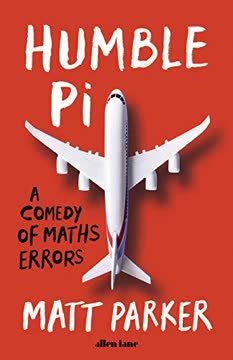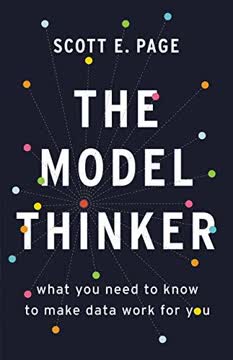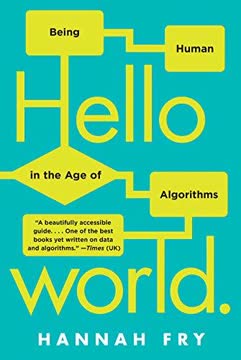Key Takeaways
1. Recognize Your Emotional Response to Statistics
"When you see a statistical claim, pay attention to your own reaction. If you feel outrage, triumph, denial, pause for a moment. Then reflect."
Emotional reactions can significantly influence how we interpret statistical information. Our preconceptions and biases often lead us to accept data that confirms our beliefs and reject information that challenges them. This phenomenon, known as motivated reasoning, affects everyone, including experts.
Examples of emotional bias:
- Smokers dismissing evidence linking smoking to cancer
- Political partisans interpreting economic data differently based on their affiliation
- Investors holding onto losing stocks due to attachment
To combat this tendency, we must:
- Pause and notice our initial emotional response
- Reflect on why we feel that way
- Consciously try to evaluate the information objectively
- Be open to changing our minds if the evidence warrants it
2. Combine Big-Picture Data with Personal Experience
"Professor Yunus is right to emphasize the advantage of seeing it up close."
Balancing perspectives is crucial for a comprehensive understanding of any issue. While large-scale statistics provide a broad view, personal experiences offer invaluable insights that numbers alone can't capture.
Consider the following approaches:
- Use official statistics to understand overall trends
- Supplement with firsthand observations or case studies
- Look for data visualization tools that combine both, like Dollar Street
This balanced approach helps in:
- Identifying discrepancies between data and reality
- Understanding nuances that might be lost in aggregated statistics
- Developing more effective solutions to complex problems
3. Understand What's Actually Being Measured
"Often, looking for an explanation really means looking for someone to blame."
Premature enumeration occurs when we jump to conclusions about statistics without fully understanding what they represent. This can lead to misinterpretation and misguided actions.
Key steps to avoid this pitfall:
- Carefully examine the definitions used in the study or survey
- Consider alternative explanations for the data
- Look for potential confounding factors
Example: Infant mortality rates can be affected by differences in how countries define and record live births, not just healthcare quality.
By taking the time to understand what's being measured, we can:
- Avoid making false comparisons
- Identify potential biases or limitations in the data
- Make more informed decisions based on the information
4. Seek Context and Comparisons for Numbers
"Step back and look for information that can put the claim into context."
Contextualizing data is essential for meaningful interpretation. Numbers in isolation can be misleading or fail to convey their true significance.
Ways to provide context:
- Compare to historical trends
- Look at similar data from other regions or countries
- Consider relative proportions, not just absolute numbers
Benefits of contextualizing:
- Helps identify whether a change is significant or just normal fluctuation
- Provides a more balanced view of the situation
- Allows for more accurate assessment of progress or problems
Example: A 5% unemployment rate might seem high, but comparing it to historical data or rates in other countries could reveal it's actually a positive economic indicator.
5. Investigate the Origins and Limitations of Data
"Good statistics are not a trick, although they are a kind of magic."
Understanding data sources is crucial for assessing the reliability and applicability of statistics. Every dataset has a backstory that can affect its interpretation.
Key questions to ask:
- Who collected the data and why?
- What methods were used?
- What are the potential biases or limitations?
Considerations:
- Sample size and selection process
- Timeframe of data collection
- Potential conflicts of interest in funding or research design
By investigating these factors, we can:
- Identify potential flaws or biases in the data
- Understand the appropriate scope of application
- Make more informed judgments about the validity of conclusions drawn from the data
6. Consider Who or What Might Be Missing from Statistics
"If we don't understand the statistics, we're likely to be badly mistaken about the way the world is."
Data gaps can significantly skew our understanding of reality. Often, certain groups or factors are systematically excluded from datasets, leading to incomplete or misleading conclusions.
Common missing elements:
- Marginalized populations
- Informal economic activities
- Hard-to-measure phenomena
Impacts of missing data:
- Reinforcement of existing biases
- Misallocation of resources
- Ineffective policy decisions
To address this issue:
- Always question who or what might be missing from the data
- Look for alternative sources that might capture overlooked information
- Consider the potential impact of these gaps on conclusions drawn from the data
7. Demand Transparency in Algorithmic Decision-Making
"If we don't know why the algorithm is doing what it's doing, we're trusting our lives to a ruler detector."
Algorithmic transparency is crucial as data-driven decision-making becomes more prevalent. Without understanding how algorithms work, we risk perpetuating biases and making unfair or ineffective choices.
Key issues with opaque algorithms:
- Difficulty in identifying and correcting errors
- Potential for reinforcing societal biases
- Lack of accountability for decisions
To promote transparency:
- Demand explanations for how algorithms make decisions
- Support efforts to audit and validate algorithmic systems
- Advocate for policies that require algorithmic accountability
By increasing transparency, we can:
- Improve the fairness and accuracy of algorithmic decisions
- Build public trust in data-driven systems
- Enable more effective oversight and regulation
8. Value and Protect Independent Official Statistics
"Independent statistical agencies, like sewers, are an essential part of modern life."
Official statistics form the bedrock of informed decision-making in society. They provide crucial information for policy-making, business planning, and public understanding of important issues.
Importance of independent statistical agencies:
- Provide unbiased, reliable data
- Enable evidence-based policy-making
- Allow for accountability in government and business
Threats to statistical independence:
- Political interference
- Budget cuts
- Attempts to manipulate or suppress unfavorable data
To protect this valuable resource:
- Support funding for statistical agencies
- Advocate for laws protecting statistical independence
- Use and cite official statistics to demonstrate their value
9. Be Wary of Beautiful but Misleading Visualizations
"Information is beautiful—but misinformation can be beautiful, too."
Data visualization can be a powerful tool for understanding complex information, but it can also be used to mislead. Attractive graphics can sometimes obscure or distort the underlying data.
Common issues in data visualization:
- Misleading scales or axes
- Cherry-picking data to support a narrative
- Using visual elements that distract from the data
To critically evaluate visualizations:
- Check the source and methodology of the data
- Look for proper context and comparisons
- Be skeptical of overly dramatic or emotional presentations
By developing visual literacy, we can:
- Appreciate effective data communication
- Identify potentially misleading presentations
- Extract meaningful insights from complex visualizations
10. Cultivate Curiosity and Openness to Changing Your Mind
"For superforecasters, beliefs are hypotheses to be tested, not treasures to be guarded."
Intellectual curiosity is the foundation of statistical literacy and critical thinking. Being open to new information and willing to change our minds in light of evidence is crucial for understanding the world accurately.
Characteristics of curious thinkers:
- Ask questions and seek deeper understanding
- Consider alternative explanations
- Update beliefs based on new evidence
Benefits of curiosity:
- Leads to more accurate understanding of complex issues
- Helps overcome cognitive biases
- Promotes lifelong learning and personal growth
To cultivate curiosity:
- Actively seek out information that challenges your beliefs
- Practice asking "why" and "how" questions
- Engage in discussions with people who have different perspectives
By embracing curiosity, we can navigate the complex world of statistics and data with greater confidence and insight.
Last updated:
FAQ
What's The Data Detective about?
- Understanding statistics: The Data Detective by Tim Harford is about interpreting and critically evaluating statistical information in everyday life.
- Ten rules: The book presents ten rules to help readers navigate data complexities, emphasizing skepticism and curiosity.
- Combating misinformation: Harford aims to equip readers with tools to discern truth from deception, using historical and contemporary examples.
Why should I read The Data Detective?
- Practical application: It's essential for anyone encountering statistics in daily life, offering actionable advice for informed decision-making.
- Enhancing critical thinking: The book helps develop an analytical approach to interpreting statistics, crucial in an age of misinformation.
- Engaging storytelling: Harford uses compelling narratives and real-world examples to make complex concepts accessible and relatable.
What are the key takeaways of The Data Detective?
- Ten rules for understanding statistics: The book outlines rules like "Search Your Feelings" and "Get the Backstory" to guide statistical evaluation.
- Importance of context: Harford stresses that statistics should not be viewed in isolation; context is crucial for accurate interpretation.
- Skepticism and curiosity: A mindset of healthy skepticism and curiosity is advocated to question the validity of statistical claims.
What are the best quotes from The Data Detective and what do they mean?
- “You can ‘prove’ anything with statistics, it seems—even that storks deliver babies.”: Highlights the potential for statistical manipulation and the importance of critical evaluation.
- “Good statistics are not a trick, although they are a kind of magic.”: Emphasizes the power of statistics when interpreted correctly.
- “The power to not collect data is one of the most important and little-understood sources of power that governments have.”: Underscores the significance of data collection in shaping policies and public perception.
What are the ten rules outlined in The Data Detective?
- Search Your Feelings: Recognize emotional reactions to statistical claims to prevent biases.
- Ponder Your Personal Experience: Balance personal experiences with statistical evidence for broader understanding.
- Avoid Premature Enumeration: Understand what is being measured before jumping to conclusions.
- Step Back and Enjoy the View: Contextualize data to understand trends and patterns.
- Get the Backstory: Know the background of a statistic for accurate interpretation.
How does The Data Detective address the issue of misinformation?
- Highlighting statistical manipulation: Harford educates readers on tactics used to distort data through historical and contemporary examples.
- Encouraging critical evaluation: The book promotes skepticism and inquiry to question statistical claims' validity.
- Providing tools for analysis: The ten rules equip readers with practical tools to analyze and interpret statistics effectively.
What is the significance of context in understanding statistics, as discussed in The Data Detective?
- Context shapes interpretation: Statistics should not be viewed in isolation; context is crucial for accurate interpretation.
- Avoiding misinterpretation: Without context, statistics can be easily misinterpreted or manipulated.
- Enhancing understanding: A holistic approach fosters better decision-making based on data.
How can I apply the lessons from The Data Detective in my daily life?
- Practice critical thinking: Use the ten rules as a framework for evaluating statistical claims in various contexts.
- Engage with data: Seek reputable sources to inform your understanding of issues.
- Foster curiosity: Cultivate a mindset of inquiry to make better-informed decisions.
What role does emotional response play in interpreting statistics, according to The Data Detective?
- Emotions can cloud judgment: Emotional reactions can lead to biased interpretations.
- Awareness of biases: Recognizing emotional responses helps assess statistical claims' validity.
- Encouraging reflection: Pause and consider how a statistic makes you feel before concluding.
How does Tim Harford suggest we evaluate statistical claims?
- Critical Analysis: Analyze the data source, methodology, and context.
- Look for Bias: Identify potential biases in data collection and presentation.
- Seek Transparency: Advocate for transparency in data sources and algorithms.
What is the significance of transparency in statistics according to The Data Detective?
- Trust in Data: Transparency fosters trust, allowing verification of findings.
- Accountability: Open reporting holds organizations accountable for their claims.
- Improvement of Algorithms: Transparency allows scrutiny and potential improvements in design.
How does personal experience play a role in understanding statistics as per The Data Detective?
- Contextual Understanding: Personal experience helps contextualize statistical information.
- Challenge Assumptions: Reflect on experiences to challenge assumptions and biases.
- Enhancing Engagement: Connecting statistics to personal experiences fosters deeper understanding.
Review Summary
The Data Detective receives mostly positive reviews for its accessible approach to understanding statistics. Readers appreciate Harford's engaging storytelling and practical advice on interpreting data critically. The book's ten rules help readers navigate statistical claims and develop a curious mindset. Some reviewers found the content familiar, but most praised its relevance in today's data-driven world. Critics noted occasional bias and simplification. Overall, the book is recommended for those seeking to improve their statistical literacy and critical thinking skills.
Similar Books










Download PDF
Download EPUB
.epub digital book format is ideal for reading ebooks on phones, tablets, and e-readers.










